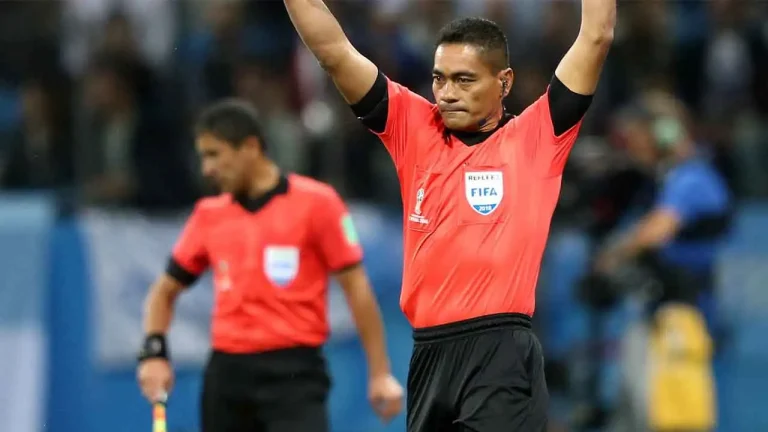What is the ICE Hockey Game Length – Explore the Duration of NHL, Ice Hockey, High School, and Kids Games.

How Long Is The Average Hockey Game? Best Ice Hockey Game Length Guide
Are you a hockey fan eagerly awaiting the next game? Or maybe you’re new to the sport and curious about what it entails. Either way, one burning question that may have crossed your mind is: how long does a typical hockey game last?
Well, strap on your skates and get ready for some ice-cold action because we’re about to dive into the thrilling world of hockey game lengths! Whether you’re an avid follower of professional leagues like the NHL or simply enjoy watching high school or recreational games, this guide will provide all the answers you seek.
From intense face-offs to breathtaking saves, we’ll explore everything from period durations to intermissions and even delve into factors that can impact game length. So let’s lace up our boots and hit the rink as we uncover just how long an average hockey game truly lasts.
A Typical Professional Hockey Game Length
Professional hockey games are known for their fast-paced action and intense competition. But how long do these thrilling matches typically last? Well, the answer can vary depending on various factors.
In general, a typical professional hockey game lasts around two to two and a half hours. This duration includes three periods of play, each lasting 20 minutes with intermissions between them. The precise length of the intermissions can differ slightly from league to league or even from game to game.
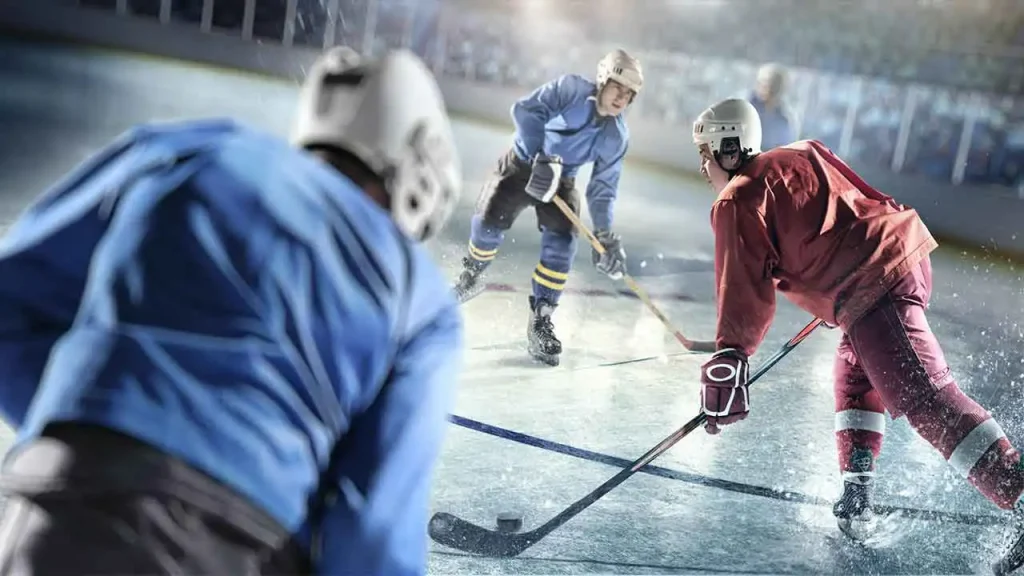
During these intermissions, players take some time to rest and regroup before heading back onto the ice for the next period. It’s also an opportunity for coaches to strategize and make any necessary adjustments. Of course, other factors can affect the overall duration of a professional hockey game. For instance, penalties taken by players can result in stoppages in play as they serve their time in the penalty box.
Additionally, injuries during the game may require medical attention and temporary halts in gameplay while players receive treatment or leave the ice surface. These unpredictable moments add some variability to the length of a match. Furthermore, commercial breaks play a role too – television broadcasts often include ad breaks which contribute to making games longer than expected. However, it’s worth noting that not all leagues have commercials during gameplay; this is more common in televised NHL games.
While there is no exact timeframe set in stone for professional hockey game lengths due to several variables at play throughout each match – you can generally expect an exciting contest lasting around two to two and a half hours!
The Structure of the Hockey Game
Hockey, a fast-paced and exhilarating sport, follows a structured format that keeps fans on the edge of their seats. The game consists of 3 periods, each lasting 20 minutes, with 2 intermissions in between. During these intermissions, players get a chance to catch their breath and strategize for the next period. Within each period, teams aim to score goals by shooting the puck into the opposing team’s net.
To ensure fairness and maintain order on the ice, officials closely monitor gameplay and enforce penalties for infractions such as tripping or slashing. These penalties result in temporary removal from play or power plays where one team has an advantage over the other. Skilled forwards attempt to outmaneuver defenders while goaltenders defend their nets fiercely against incoming shots. Speed, agility, teamwork – every aspect comes together in this thrilling spectacle.

Hockey isn’t just about skill; it also requires mental fortitude. Players must make split-second decisions under pressure while adapting to changing dynamics on the ice. With its unique structure and high-intensity levels throughout each period, hockey offers an unforgettable experience for players and spectators alike. So grab your favorite jersey and join in on this thrilling journey across frozen arenas!
Key Point
Understanding the average length of a hockey game is essential for fans planning their viewing experience or players preparing for matches.
Ice Hockey Vs NHL Hockey Game Length
When it comes to hockey, there are different levels of play. One of the main distinctions is between ice hockey and NHL hockey. While they may seem similar, some key differences set them apart.
Ice hockey refers to any form of the game played on ice, whether it’s a casual pickup game or a competitive league match. It can be played by people of all ages and skill levels, making it accessible to everyone who loves the sport. On the other hand, NHL (National Hockey League) hockey specifically refers to professional-level games sanctioned by the NHL. These games feature some of the best players in the world competing at an elite level.
The biggest difference between ice hockey and NHL hockey lies in the level of competition and skill displayed on the ice. In ice hockey, you’ll find a wide range of talent levels, from beginners who are just learning how to skate to experienced players with years of experience.
NHL hockey takes things up several notches with lightning-fast skating speeds, incredible stickhandling skills, and bone-crushing hits. The intensity and skill exhibited at this level make for an exhilarating viewing experience for fans. Whether you’re playing or watching a game, both ice hockey and the NHL provide unique experiences that capture the essence of this beloved sport. So lace up your skates or grab some popcorn – there’s always excitement waiting on the rink!
NHL Hockey Game Length
When it comes to the National Hockey League (NHL), the duration of a game can vary depending on various factors. However, on average, an NHL game typically lasts around 2 and a half hours. During this time, the game is divided into 3 periods of 20 minutes each. Between these periods, some intermissions last about seventeen minutes. These breaks allow players to rest and strategize for the next period.
But what factors affect the overall length of an NHL game? One significant factor is regular season overtime. If teams are tied at the end of regulation time, they will play a five-minute sudden-death overtime period. In some cases, multiple overtime may be necessary until a winner is determined.

In playoff games, however, there’s no limit to how many overtime periods can be played until one team scores and wins. This can lead to intense and thrilling extended gameplay that keeps fans on their toes. Other time-consuming factors include warmups before the game begins and cool-downs afterward. Additionally, injuries or penalties during gameplay may result in additional stoppages or delays.
While there isn’t always a definitive answer as to how long an NHL game will last due to various variables involved; it’s safe to say you’ll be entertained for several hours when tuning in!
Periods and Intermissions
Periods and intermissions play a crucial role in a hockey game’s length. A typical hockey game consists of three periods, each lasting 20 minutes. These periods are divided by two intermissions, providing players with rest and time to strategize. During the first and second intermission, teams retreat to their locker rooms to regroup and receive guidance from their coaches. This break allows them to analyze their performance thus far and make necessary adjustments for the remainder of the game.
Intermissions also provide an opportunity for fans to grab refreshments, use restroom facilities, or engage in lively discussions about the ongoing game. It isn’t uncommon for vendors to roam around offering snacks or souvenirs during these breaks as well.
The length of intermissions may vary depending on various factors such as broadcasting schedules or special events happening during halftime shows. However, they typically last around 15 minutes. Periods and intermissions serve as important components that structure a hockey game while providing necessary breaks for both players and spectators alike.
Factors Affecting Ice Hockey Game
The duration of a hockey game can vary depending on several factors. Let’s take a closer look at some of the key factors that can impact the length of a game.
These various factors all have an impact on how long a hockey game lasts and contribute towards making each match unique in terms of its duration.
Regular Game Overtime
Regular season overtime in hockey can add an extra level of intensity and excitement to the game. When regulation time ends with a tie score, teams head into overtime to determine a winner. The format for regular-season overtime has changed over the years to reduce the number of games that end in ties.
Currently, regular season NHL games go into a five-minute sudden-death period of 3-on-3 hockey. This means each team has three skaters on the ice instead of the usual five. The reduced number of players creates more open space and scoring opportunities, leading to quicker resolutions.
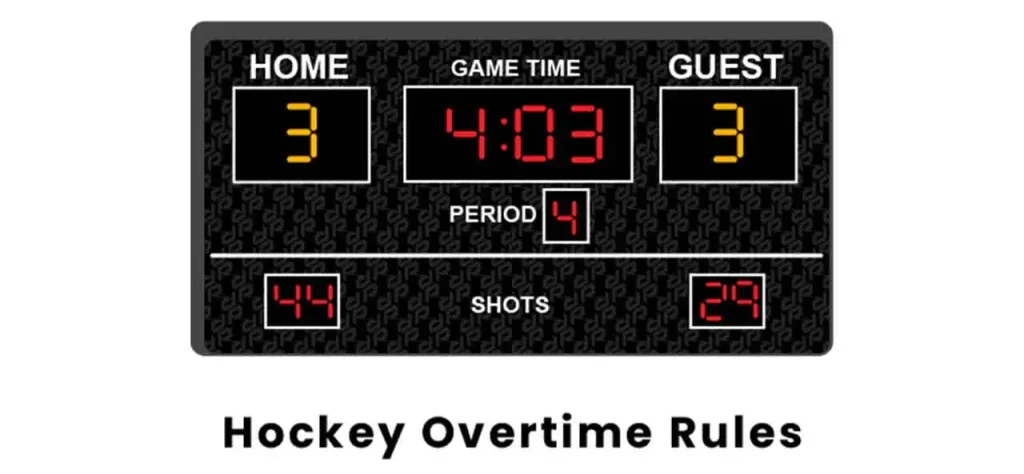
If neither team scores during these five minutes, the game heads into a shootout where each team selects three shooters who take turns attempting to score against the opposing goaltender. The addition of overtime and shootouts has certainly added some suspense and unpredictability to regular-season games. It provides fans with additional action while ensuring there is always a winner at the end of every game.
While some purists may still prefer traditional tie-breakers or longer periods of play, regular season overtime adds another layer of excitement as teams battle it out for those crucial extra points in their quest for playoff positioning.
Playoff Overtime
When it comes to playoff hockey, the intensity reaches another level. And what better way to add to the excitement than with some nail-biting overtime action? Playoff overtime is an adrenaline rush like no other, where every shot and save could be the difference between victory and defeat. Unlike regular season games that can end in a tie after regulation, playoff games must have a winner. So if there’s still no victor after 3 periods of play, we enter the thrilling world of sudden-death overtime.
In playoff overtime, each team gets one 20-minute period to try and score the game-winning goal. The stakes are high as players push themselves harder than ever before. The tension builds with each passing minute until someone finally breaks through and lights that lamp.
The pressure on goaltenders during playoff overtime is immense. They become the last line of defense against elimination or moving on in pursuit of glory. Their reflexes are put to the test as they make acrobatic saves left and right. Coaches strategize meticulously during intermissions, making adjustments based on their opponent’s strengths and weaknesses. Every shift becomes crucial as teams battle for supremacy on the ice.
Playoff overtime can be both exhilarating and nerve-wracking for players and fans alike. It brings out raw emotions, showcasing not only skill but also determination, resilience, and mental fortitude. So next time you find yourself watching a playoff hockey game that heads into extra time, buckle up because anything can happen in those heart-pounding moments where legends are made!
Warmups and Cool-Downs Game
Before the puck drops and the game officially begins, hockey players go through a rigorous warm-up routine. This isn’t just a casual stretch and jog – it’s an opportunity for players to prepare their bodies for the intense physical demands of the game.
During warm-ups, players engage in dynamic stretching exercises that help increase flexibility and prevent injuries. They also participate in skating drills, passing practice, and shooting exercises to get their bodies warmed up and their skills honed.
The duration of warm-ups can vary depending on factors such as team preference or arena availability. Typically, warm-ups last around 15-20 minutes. However, some teams may opt for shorter or longer sessions based on their specific needs.
After the game concludes, cool-downs are equally important. Players engage in light exercises like jogging or cycling to gradually bring down their heart rate while preventing muscle stiffness and soreness.
Injuries Break
Injuries are an unfortunate reality in any sport, and hockey is no exception. When a player gets injured during a game, the play is stopped to ensure their safety and allow them to receive proper medical attention. This break in the game can vary in length depending on the severity of the injury.
During an injury break, players from both teams gather around their respective benches, waiting anxiously for updates on their injured teammate. Coaches use this time to strategize and make necessary adjustments to their game plan.
In some cases, if the injury is minor and requires only a quick assessment or treatment, the break may be relatively short. However, more serious injuries may require longer breaks as medical staff assess and stabilizes the player before they can be safely removed from the ice.
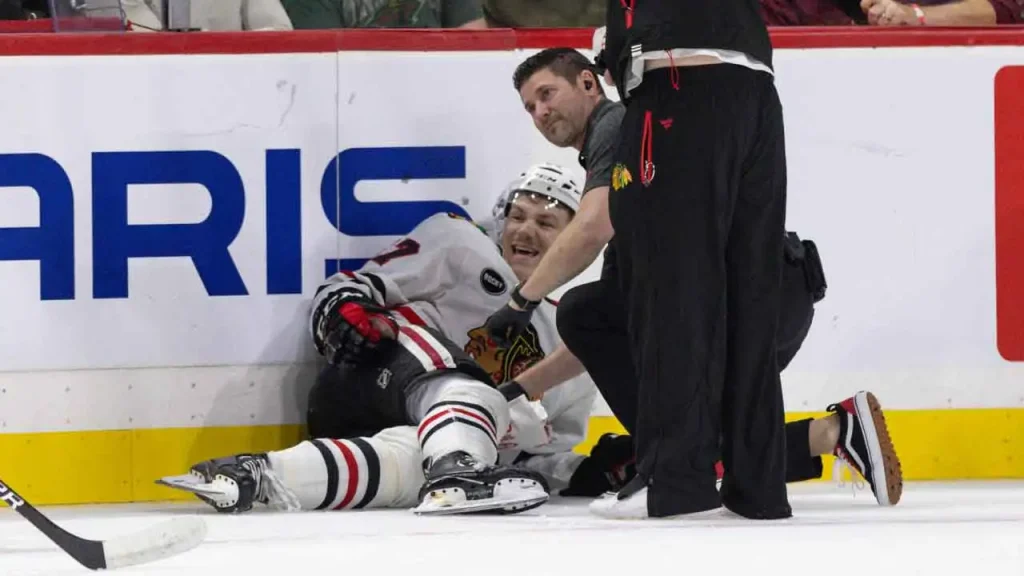
While nobody wants to see anyone get hurt during a hockey game, these breaks serve as important reminders of how physical and demanding this sport can be. Safety should always remain a top priority so that players can continue enjoying this thrilling sport without unnecessary risks.
Remember that injuries are unpredictable events within a hockey game; however they not only affect players physically but also mentally by disrupting team dynamics momentarily – albeit sometimes with lasting consequences throughout games thereafter.
Penalties Break
Penalties in a hockey game can often lead to an exciting shift in the momentum of the game. When a player commits an infraction, they are sent to the penalty box for a designated amount of time, depending on the severity of the penalty. This creates what is known as a “penalties break,” where one team has fewer players on the ice.
During this penalty break, both teams have to adjust their strategies and take advantage of any opportunities that arise. The team with more players will try to capitalize on their numerical advantage by creating scoring chances and putting pressure on their opponents’ defense.
On the other hand, the shorthanded team will focus on defensive play and killing off penalties until their teammate returns to full strength. This requires excellent communication and teamwork to maintain control over puck possession and disrupt their opponent’s offensive plays.
The penalty break adds an extra layer of excitement and unpredictability to hockey games. It highlights the importance of discipline and staying out of the penalty box while showcasing each team’s ability to adapt under different circumstances. They bring suspense, strategy adjustments, and intense competition that keeps fans on edge throughout each match.
Commercials Break
During a hockey game, you may have noticed that there are breaks in the action where commercials are aired. These commercial breaks serve multiple purposes and can impact the overall length of a game.
One of the main reasons for commercial breaks is to generate revenue for both the teams and broadcasters. Advertisers pay significant amounts of money to have their products or services showcased during these breaks, helping to fund the sport and keep it accessible to fans. Commercial breaks also provide an opportunity for players to catch their breath and regroup. Hockey is an intense sport that requires physical exertion, so these brief pauses allow players to rest before returning to the ice with renewed energy.
Additionally, commercial breaks give viewers at home a chance to take a break themselves or grab some refreshments without missing any on-ice action. It’s a win-win situation – advertisers get exposure, players get rest, and fans get convenience.
However, it’s worth noting that excessive or poorly timed commercials can sometimes frustrate fans who want uninterrupted gameplay. Striking a balance between revenue generation and maintaining fan engagement is crucial for ensuring an enjoyable viewing experience. Remember that these interruptions play an important role in supporting your favorite teams while giving players well-deserved respite!
High School Ice Hockey Game Length
How long is a high school hockey game? Well, the duration of a high school hockey game can vary depending on several factors. On average, a high school hockey game typically lasts around 90 minutes to 2 hours. The structure of a high school hockey game is similar to that of professional games, with 3 periods and intermissions in between. Each period usually lasts for 15 minutes, but it can be longer or shorter depending on specific league rules.
Factors such as penalties and stoppages in play can also influence the length of the game. If there are frequent penalties or injuries occur during the game, it may result in additional time being added to the overall duration.
It’s important to note that, unlike professional games, high school hockey doesn’t have overtime periods if the score is tied at the end of regulation. Instead, some leagues may declare a tie after regulation time while others may go straight into shootouts or use other methods to determine a winner.
Recreational or Kid’s Ice Hockey Game Length
Recreational or kid’s hockey games tend to have shorter durations compared to professional or high school games. This is mainly because the focus is on fun and skill development rather than competition. In most cases, recreational or kid’s hockey games are divided into 3 periods of equal length. Each period typically lasts around 10-15 minutes, depending on the age group and league rules. These shorter periods allow young players to stay engaged and maintain their energy levels throughout the game.
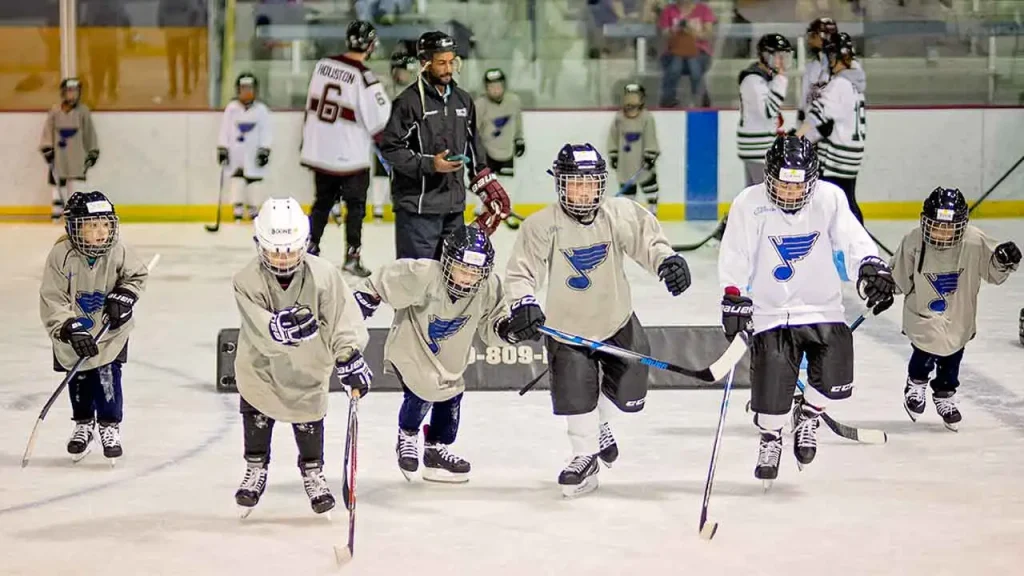
Intermissions between periods in recreational or kid’s hockey games are usually kept brief, lasting only a few minutes for players to rest, hydrate, and receive any necessary instructions from coaches. Another factor that contributes to the relatively short duration of these games is fewer stoppages in play. Referees may let some minor infractions slide to keep the game flowing smoothly and ensure maximum participation for all players.
It’s important to note that specific game lengths can vary depending on factors such as league regulations, level of play (beginner vs advanced), and age group. However, overall, recreational or kid’s hockey games aim for a balance between skill development and keeping young players engaged without overly exhausting them.
By providing shorter game durations with regular breaks for rest and instruction, children can fully enjoy playing hockey while also learning essential skills needed for future growth in the sport!
Number of Players On Ice Hockey Game
The number of players on the ice in a hockey game is an important aspect that contributes to the overall dynamics and flow of the game. Typically, each team has 6 players on the ice – 3 forwards, 2 defensemen, and 1 goaltender. Having 6 players allows for strategic positioning and teamwork as they navigate through offensive plays or defend against their opponents. The forwards are responsible for scoring goals and creating opportunities, while defensemen focus on preventing opposing teams from gaining momentum and protecting their own goals.
However, it’s worth noting that there are variations in player numbers depending on different levels of play. In some recreational or kid’s hockey games, there may be fewer players per team to accommodate skill development and ensure everyone gets ample playing time.
Additionally, certain rule changes can also impact the number of players on ice. For instance, during power plays or penalty kills, teams may have fewer skaters due to penalized players serving time in the penalty box.
The Impact of Rule Changes
Rule changes in hockey have the potential to significantly impact the length and flow of a game. Over the years, various modifications have been implemented to enhance player safety, increase scoring opportunities, and create a faster-paced game.
One notable rule change that has influenced game length is the introduction of three-on-three overtime in regular season play. This exciting modification allows for more open ice and increased chances for goals, ultimately leading to quicker conclusions in games tied at the end of regulation.
Another significant rule change involves goaltender equipment regulations. The NHL has implemented measures to reduce the size and bulkiness of goalie gear over time. This adjustment not only improves player mobility but may also contribute to shorter games by reducing stoppages related to equipment adjustments or repairs.
Goaltender Equipment Regulations
In the fast-paced game of hockey, goaltenders play a crucial role in keeping the puck out of their team’s net. To ensure fair competition and maintain player safety, there are regulations in place regarding the equipment that goaltenders can wear. The National Hockey League (NHL) has specific rules governing goaltender equipment. These regulations aim to prevent goaltenders from gaining an unfair advantage by wearing oversized or excessively protective gear.
One key aspect of these regulations is the sizing restrictions on various pieces of equipment such as leg pads, chest protectors, and gloves. The NHL has set maximum dimensions for these items to limit their size and bulkiness. Additionally, there are guidelines for the construction materials used in goalie equipment. For example, chest protectors must have proper padding to absorb impact but can’t be overly rigid or bulky.
These regulations help ensure that all goaltenders compete on a level playing field while still providing them with adequate protection. By maintaining proper sizing and construction standards, the NHL aims to strike a balance between player safety and fair competition.
However, it’s important to note that different leagues may have slightly different rules regarding goalie equipment. So if you’re watching a non-NHL game or participating in a lower-level league yourself, be sure to familiarize yourself with any specific regulations they may have in place. Goaltender equipment regulations play an integral role in maintaining fairness and safety within hockey games at all levels of play.
FAQs
Conclusion
The length of a hockey game can vary depending on various factors. A typical professional NHL game lasts around 2 hours and 30 minutes, including intermissions. However, this can be longer if there is overtime or other time-consuming factors such as injuries and penalties.
During regular season games, if the score is tied after regulation time, a five-minute sudden-death overtime period follows. If no team scores during this period, the game proceeds to a shootout to determine the winner. In playoff games, however, overtime periods continue until one team scores a goal to win.
When it comes to high school hockey games or recreational/kids’ hockey games, their durations may differ from professional games due to variations in rules and regulations specific to those leagues. Additionally, factors like the number of players on ice and rule changes can also impact game length.
Whether you’re watching an intense NHL matchup or cheering on your local high school team or kids playing at a local rink, understanding how long a hockey game typically lasts allows you to plan accordingly so you don’t miss any exciting moments on the ice! So grab your favorite jersey and get ready for some thrilling action on the ice – but be prepared for extra excitement if it goes into overtime!





